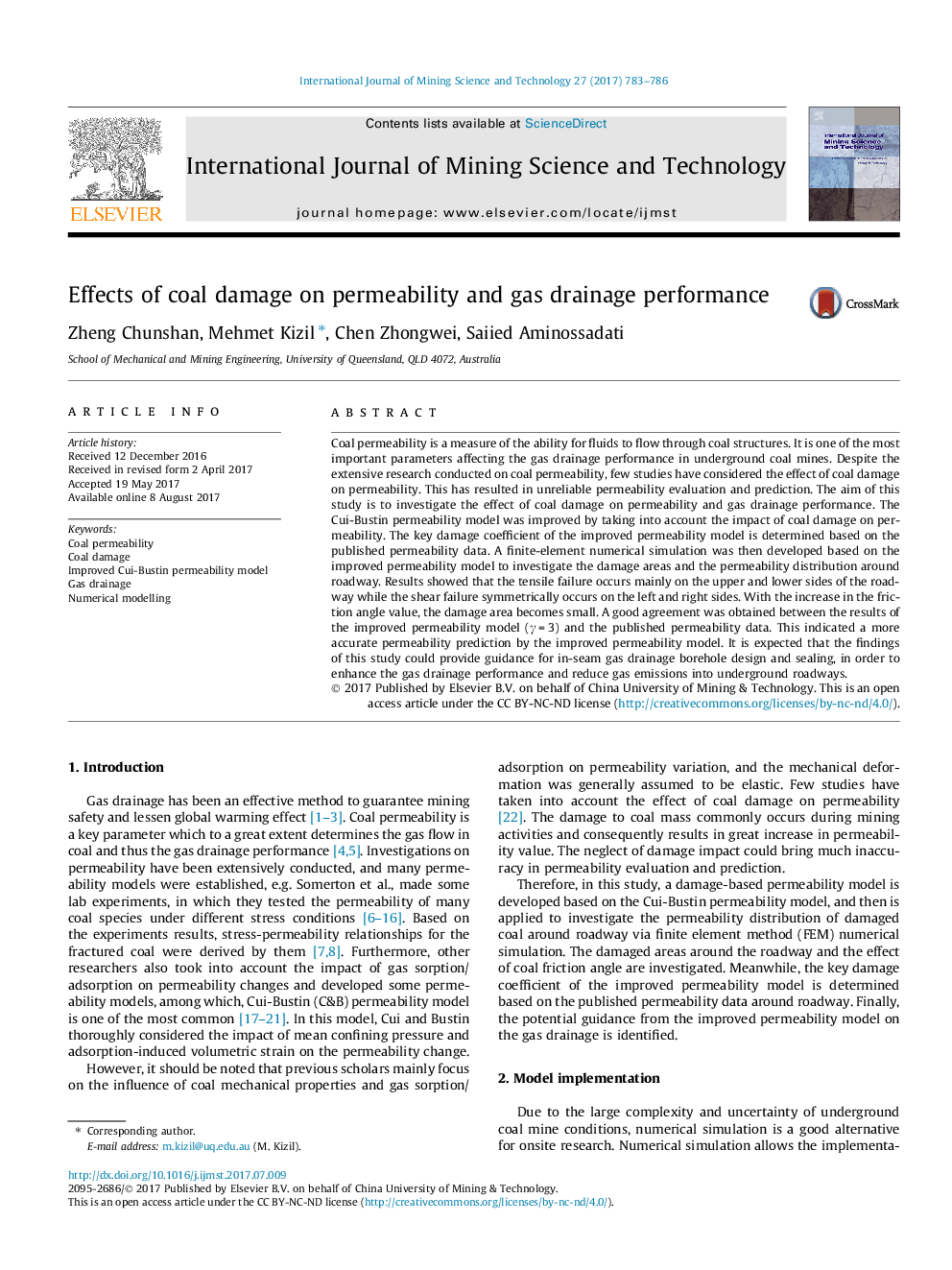| Article ID | Journal | Published Year | Pages | File Type |
|---|---|---|---|---|
| 4921743 | International Journal of Mining Science and Technology | 2017 | 4 Pages |
Coal permeability is a measure of the ability for fluids to flow through coal structures. It is one of the most important parameters affecting the gas drainage performance in underground coal mines. Despite the extensive research conducted on coal permeability, few studies have considered the effect of coal damage on permeability. This has resulted in unreliable permeability evaluation and prediction. The aim of this study is to investigate the effect of coal damage on permeability and gas drainage performance. The Cui-Bustin permeability model was improved by taking into account the impact of coal damage on permeability. The key damage coefficient of the improved permeability model is determined based on the published permeability data. A finite-element numerical simulation was then developed based on the improved permeability model to investigate the damage areas and the permeability distribution around roadway. Results showed that the tensile failure occurs mainly on the upper and lower sides of the roadway while the shear failure symmetrically occurs on the left and right sides. With the increase in the friction angle value, the damage area becomes small. A good agreement was obtained between the results of the improved permeability model (γ = 3) and the published permeability data. This indicated a more accurate permeability prediction by the improved permeability model. It is expected that the findings of this study could provide guidance for in-seam gas drainage borehole design and sealing, in order to enhance the gas drainage performance and reduce gas emissions into underground roadways.
